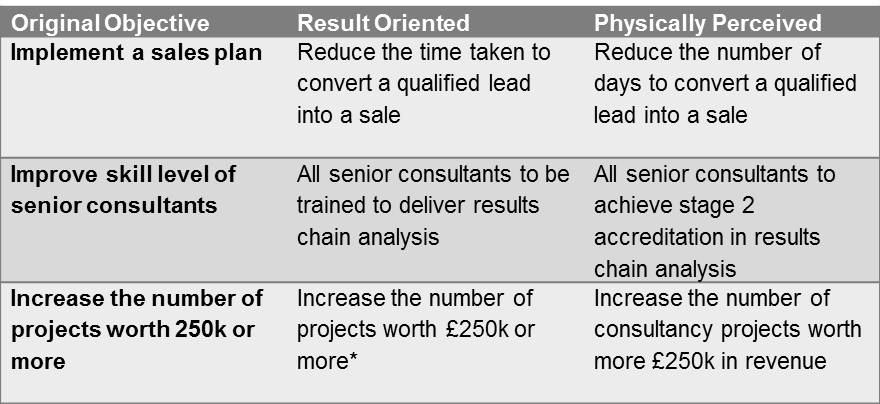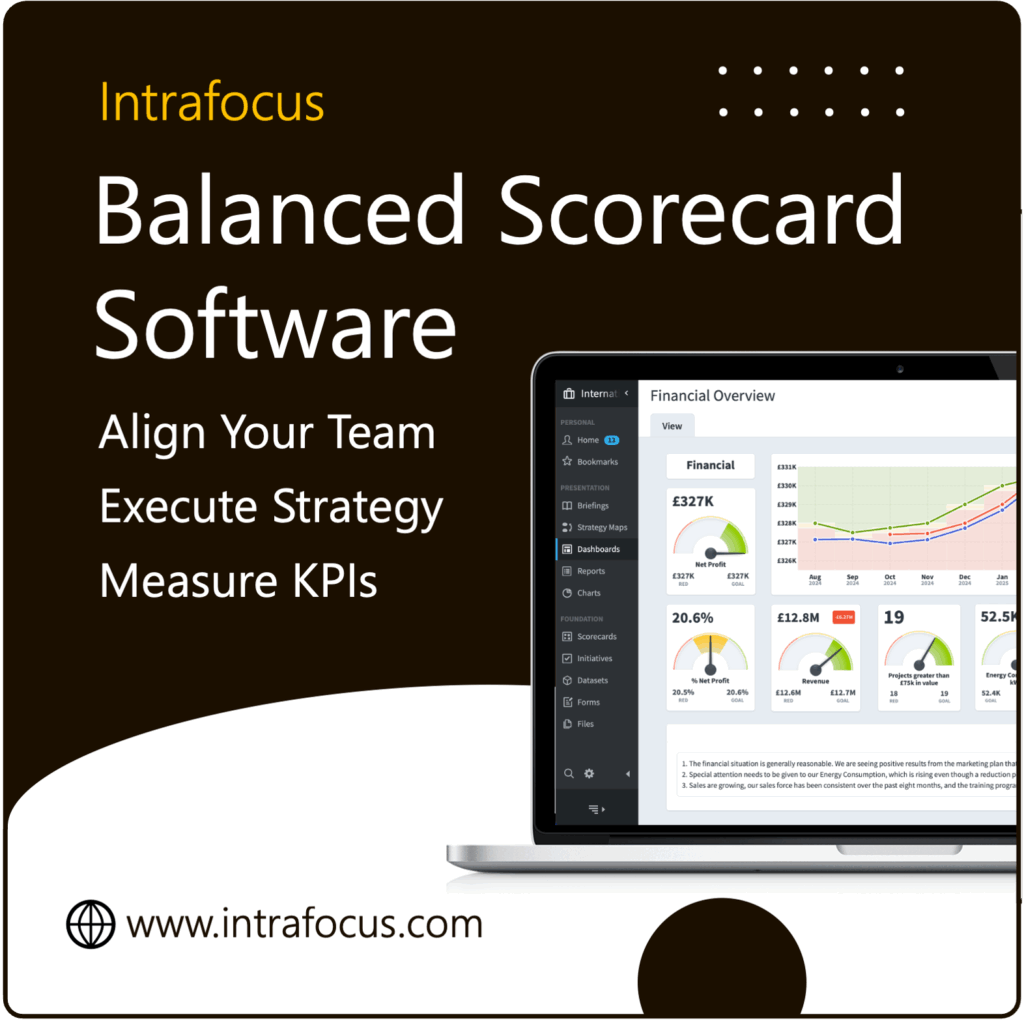How to Create Objectives – Performance measures are based on Objectives. A performance measure should not exist unless it is contributing to an objective. It is true that the thought processes that go into creating performance measures and objectives can move so quickly that these activities run in parallel, nevertheless, a performance measure cannot exist without an objective.
What makes a good objective and how should it be created? Let’s look at some examples and work them through. The following are two examples that you may have considered:
- Increase company profit
- Increase revenue by 10% next year
These are great objectives and easily measurable. Starting at the top is admirable. However, your ability to influence top-line objectives is limited. You may want to think about objectives that can be more easily controlled to contribute to the top-line objectives, for example:
- Increase the number of projects worth £250k or more
- Improve skill level of senior consultants
- Implement a sales plan
As this stage it is not important to be precise, the next stage will crisp things up. You should, however, think about how the objective will contribute to your overall strategy, whether or not you have any control over the objective (it’s best to have some level of control), that the objective is a single objective and not several under the guise of a single objective and finally it should be something that is important and you feel is in need of serious attention.
When you have chosen an objective check:
- It will contribute to your company/organisation strategy
- It is important and will it make a difference
- It is a single objective
- You have some level of control to influence the result
- It is something you think can be measured
It must be noted that one of the most common mistakes in objective definition is to focus on activities rather than results. Objectives, like performance measures, are concerned with results. It is essential to frame objectives in results-oriented language, this forces us to think more precisely about what we are actually trying to achieve. For example, if we look at one of the objectives provided above ‘Implement a sales plan’ this may seem as a very sensible thing to do but it is not an objective. It is an activity that can only be measured through the time it takes to implement the plan. It will tell us nothing about success or failure of the plan relative to a business strategy.
[Important note: Activities, plans and projects are important. They are the means by which we implement change to make improvements]
We therefore need to think about objectives in terms of results. The previous example might be more useful if it included why we want to implement a sales plan. It may be ‘to reduce the sales cycle’. This is still a bit vague and could be better expressed as ‘to reduce the time taken to convert a qualified lead into a sale’. This is much better and has produced and objective with a tangible result. This also illustrates the need to bring clarity into the language we use to create our objectives. That is, what are we actually trying to achieve?
In business we have a tendency to use words and phrases like ‘improve, satisfaction, more effective, improved quality, successful implementation, increased efficiency, greater productivity’. Although the implied meaning behind these words and phrases is positive, the actual meaning is vague. Objectives using these words do not address the need to be results-oriented and therefore will always fall short if used when related to performance improvement. It is always better to use words that have common meaning and cannot be vaguely interpreted.
Using words that relate to how we physically perceive things in the world is a good technique to sense-check you are on the right track. For example using our previous objective ‘reduce the time taken to convert a qualified lead into a sale’ if we think about how we would physically perceive this, it would almost certainly take us down the route of asking the question; in what time-scales do we mean? This in turn would lead to a more succinct expression that would include a physical parameter, for example: ‘reduce the number of days to convert a qualified lead into a sale’. We now have an objective that describes a result, has clarity in interpretation and in this case has a time parameter.
It is not important to go so far as including a target within the objective. It would have been easy to express our example as “reduce the number of days to convert a qualified lead to a sale from 30 to 25’. Targets are the domain of the measure rather than the objective.
In summary, How to Create Objectives:
- Check that the objective is an objective (not an activity, plan or project)
- Frame the objective using result-oriented language
- Remove vague words and include things that can be physically perceived
The table below illustrates this activity:
For more information on this subject go to our KPI Training pages




